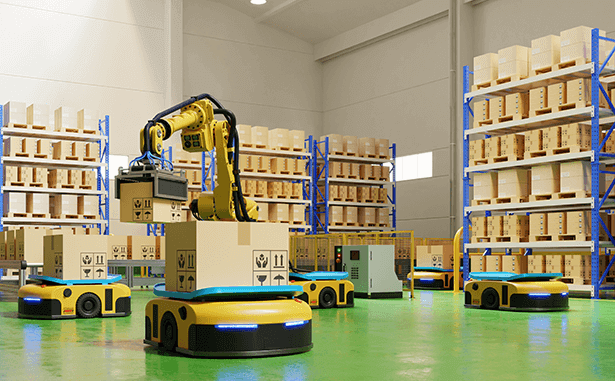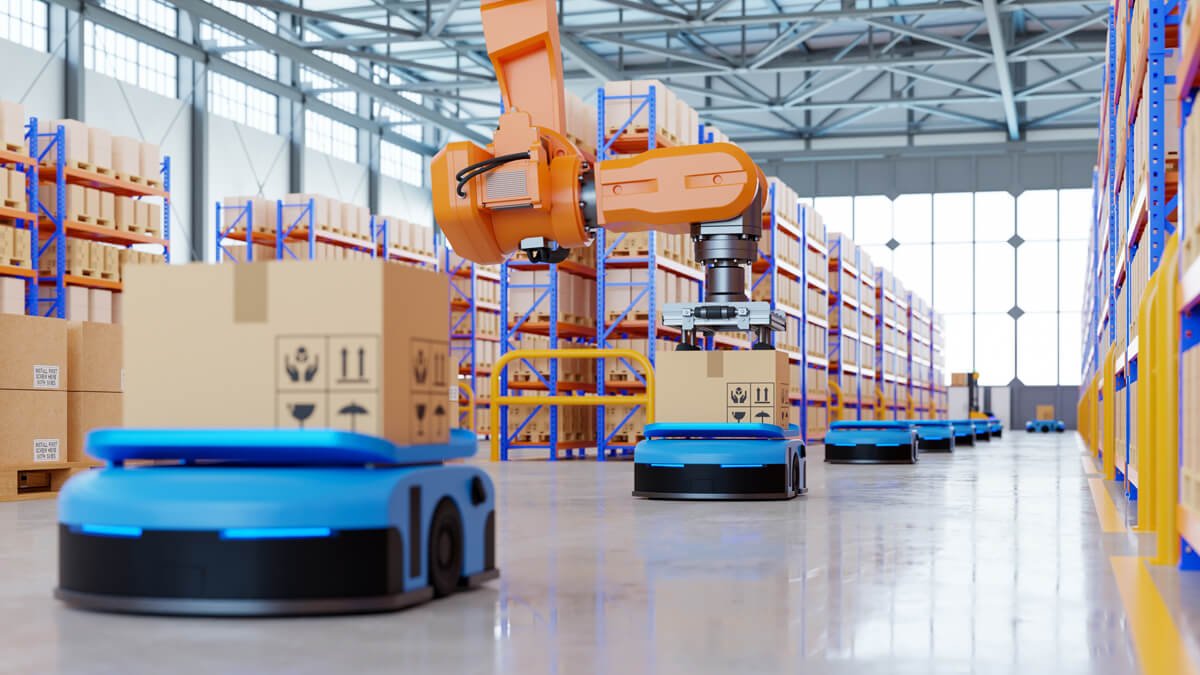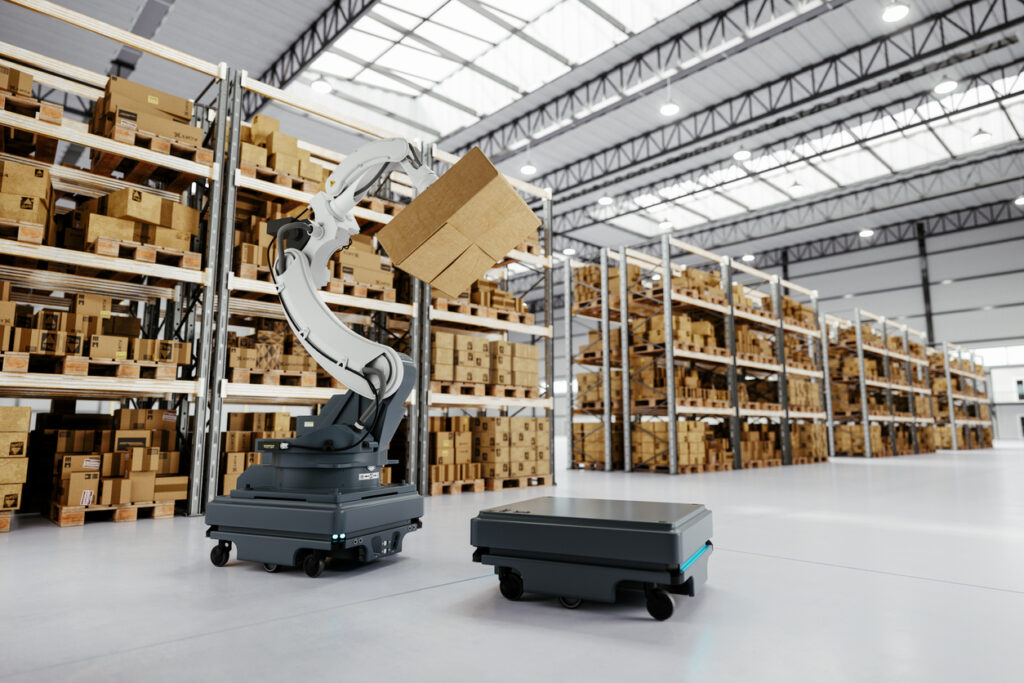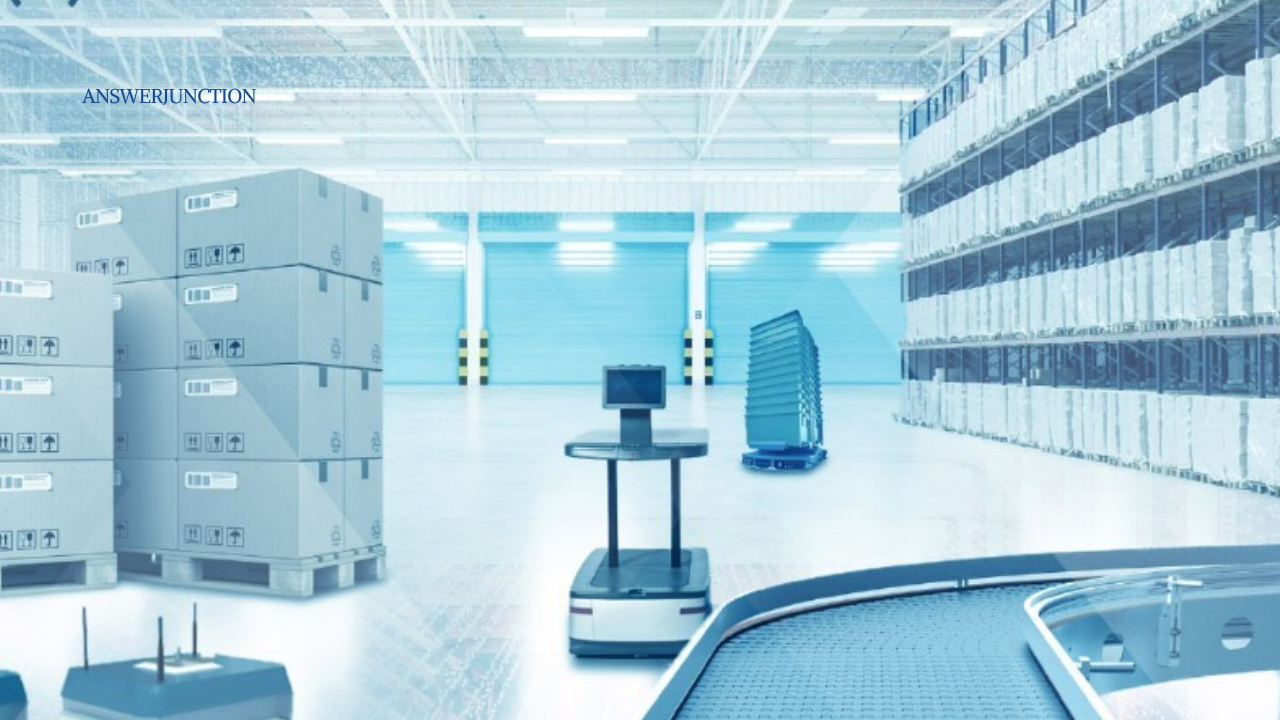In recent years, the evolution of technology has transformed various sectors, with warehousing and logistics standing at the forefront of this revolution. The introduction of autonomous robots into warehousing has marked a significant shift in how goods are stored, retrieved, and managed. These robots, equipped with advanced sensors, artificial intelligence (AI), and machine learning capabilities, are enhancing efficiency, reducing costs, and addressing labour shortages in warehouses across the globe. This article delves into the pivotal role of autonomous robots in warehousing, examining their functionalities, benefits, and the future of warehouse automation.
The Rise of Autonomous Robots in Warehousing

Autonomous robots are machines capable of performing tasks without human intervention, thanks to their sophisticated programming and onboard technology. In warehousing, these robots can take on a variety of roles, including inventory management, order fulfilment, and transportation of goods. The rise of e-commerce and the increasing demand for rapid order processing have fueled the adoption of these robotic systems. Retail giants and logistics companies are investing heavily in robotic solutions to optimize their supply chains and improve customer satisfaction.
Historically, warehouses relied heavily on manual labour for tasks such as picking, packing, and sorting. However, as consumer expectations have evolved, so too have the demands placed on warehousing operations. Today’s customers expect faster delivery times and increased accuracy in order fulfilment, which has prompted warehouse managers to explore automation options. Autonomous robots have emerged as a viable solution, offering enhanced productivity and accuracy while minimizing the risk of human error.
Types of Autonomous Robots in Warehousing
The deployment of autonomous robots in warehousing is diverse, with several types designed to perform specific tasks. Understanding these different types is crucial to appreciating their roles in the overall warehouse ecosystem.
Automated Guided Vehicles (AGVs)
Automated Guided Vehicles (AGVs) are among the most common types of autonomous robots used in warehouses. These vehicles navigate predetermined paths using various technologies such as magnetic strips, laser guidance, or computer vision. AGVs are typically used for transporting goods from one location to another within the warehouse, reducing the need for manual handling and improving efficiency.
Autonomous Mobile Robots (AMRs)
Unlike AGVs, Autonomous Mobile Robots (AMRs) operate without fixed paths. Equipped with advanced sensors and AI, AMRs can navigate dynamic environments, avoiding obstacles and adapting to changes in their surroundings. This flexibility allows them to perform a wider range of tasks, including picking items from shelves and transporting them to packing stations.
Robotic Arm Systems
Robotic arm systems are specialized robots designed for tasks such as sorting, picking, and packing. These systems can work alongside humans or operate independently, using vision systems to identify items and precise movements to handle them. Robotic arms enhance the speed and accuracy of order fulfilment processes, making them invaluable in modern warehouses.
Drones
Drones are increasingly being utilized for inventory management in large warehouses. Equipped with cameras and sensors, these flying robots can quickly scan shelves, identify stock levels, and perform regular inventory checks. Drones help maintain inventory accuracy and reduce the time required for manual stocktaking.
Enhancing Efficiency and Productivity
One of the primary advantages of incorporating autonomous robots in warehousing is the substantial boost in efficiency and productivity. These robots can operate continuously without the need for breaks, resulting in higher throughput and reduced cycle times. For example, AGVs can transport goods between different areas of a warehouse, while AMRs can pick items from shelves more quickly than human workers.
Furthermore, autonomous robots are capable of handling repetitive tasks with consistent accuracy. In an environment where even minor errors can lead to significant disruptions, robots provide a level of precision that helps maintain order accuracy. This reduction in human error not only improves customer satisfaction but also minimizes costly returns and restocking processes.
Cost Reduction and Labor Efficiency
Implementing autonomous robots in warehousing can lead to significant cost reductions over time. While the initial investment in robotic systems may be substantial, the long-term savings often justify the expense. By automating routine tasks, warehouses can reduce labour costs associated with hiring, training, and maintaining a large workforce.

Additionally, autonomous robots help alleviate labour shortages that many industries face today. As demographics shift and the availability of manual labour declines, businesses are turning to automation to fill the gaps. By utilizing robots for tasks that may be difficult to staff, warehouses can ensure continuity in operations and meet customer demands effectively.
Safety and Ergonomics
Safety is a critical concern in warehousing operations, where the risk of accidents and injuries is high due to the nature of the work. Autonomous robots contribute to improved safety in several ways. First, they can take over hazardous tasks that might pose risks to human workers, such as lifting heavy items or operating in dangerous environments. By removing humans from these high-risk situations, warehouses can create safer work environments.
Moreover, the ergonomic benefits of using robots are significant. Workers can focus on more complex tasks that require cognitive skills, while robots handle physically demanding duties. This shift can lead to increased job satisfaction and reduced fatigue, ultimately enhancing the overall working environment.
Real-Time Data and Inventory Management
One of the transformative aspects of autonomous robots in warehousing is their ability to collect and analyze real-time data. Equipped with advanced sensors and IoT technology, these robots can monitor inventory levels, track the movement of goods, and provide insights into warehouse operations. This data-driven approach allows managers to make informed decisions regarding inventory management, demand forecasting, and process optimization.
For instance, autonomous robots can communicate with warehouse management systems (WMS) to update stock levels in real-time, ensuring that accurate information is available for order processing. This level of visibility not only enhances operational efficiency but also improves customer service by providing accurate delivery timelines and stock availability information.
Integration with Existing Systems
The successful deployment of autonomous robots in warehouses requires careful integration with existing systems and processes. While robots offer advanced capabilities, they must work in harmony with warehouse management systems, inventory software, and other technologies already in place.
Many companies are investing in interoperable systems that facilitate seamless communication between robots and human workers. This integration ensures that operations run smoothly, allowing for a collaborative environment where both robots and humans contribute to productivity.
Case Studies: Successful Implementation of Autonomous Robots
Several companies have successfully implemented autonomous robots in their warehousing operations, showcasing the benefits and potential of this technology.
Amazon
Amazon is a pioneer in warehouse automation, utilizing a fleet of Kiva robots (now Amazon Robotics) to enhance their fulfilment centres. These autonomous robots transport shelves of products to human workers, reducing the time spent walking and searching for items. This innovative approach has significantly improved order fulfilment speeds and allowed Amazon to meet the demands of its rapidly growing customer base.
Walmart
Walmart has also embraced robotic automation in its supply chain. The retail giant has deployed autonomous floor scrubbers in its stores and fulfilment centres, ensuring cleanliness while freeing up employees for more critical tasks. Additionally, Walmart is exploring the use of drones for inventory management, further enhancing efficiency and accuracy in its operations.
DHL
DHL has integrated autonomous mobile robots into its warehouses to improve productivity and reduce labour costs. These robots assist with tasks such as sorting and transporting packages, allowing workers to focus on more complex responsibilities. By leveraging automation, DHL has achieved significant improvements in efficiency and service quality.
The Future of Autonomous Robots in Warehousing

The future of autonomous robots in warehousing looks promising, with continuous advancements in AI, machine learning, and robotics technology. As these technologies evolve, we can expect even greater capabilities and more sophisticated robots that can perform a wider range of tasks.
Moreover, the integration of autonomous robots with emerging technologies such as blockchain and augmented reality (AR) will further enhance warehouse operations. Blockchain can provide secure and transparent tracking of goods, while AR can assist workers in navigating complex warehouse layouts and locating items quickly.
Additionally, as environmental sustainability becomes a priority for businesses, autonomous robots can contribute to greener operations. By optimizing routes and reducing energy consumption, these robots can help warehouses minimize their carbon footprints.
The role of autonomous robots in warehousing is transforming the landscape of logistics and supply chain management. With their ability to enhance efficiency, reduce costs, and improve safety, these robots are becoming essential tools for modern warehouses. As technology continues to advance, we can expect autonomous robots to play an even more significant role in shaping the future of warehousing. Embracing this technology is not merely an option but a necessity for businesses aiming to remain competitive in an increasingly automated world. As we move forward, the integration of autonomous robots into warehousing will pave the way for a new era of productivity and innovation in the logistics sector.



